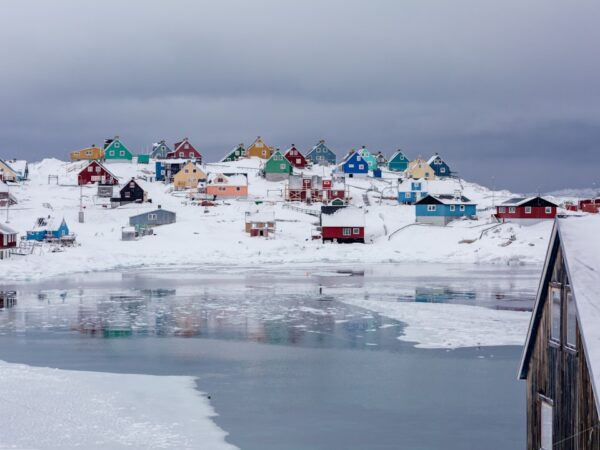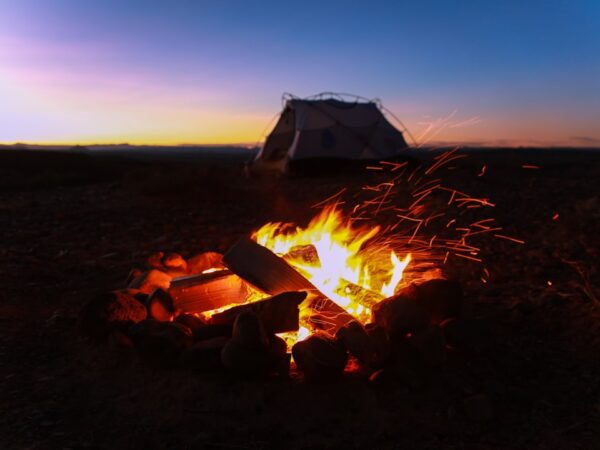
Discovering Caribbean Shipwrecks
Caribbean shipwrecks are remnants of the region’s rich maritime history and have become an integral part of its cultural heritage. These shipwrecks, scattered across the crystal-clear waters of the Caribbean Sea, hold stories of adventure, tragedy, and exploration. They serve as a window into the past, offering a glimpse into the lives of sailors, pirates, and explorers who once traversed these waters.
The Caribbean Sea has long been a treacherous place for ships, with its unpredictable weather patterns, treacherous reefs, and hidden shoals. Over the centuries, countless vessels have met their demise in these waters, leaving behind a trail of shipwrecks waiting to be discovered and explored.
Key Takeaways
- Caribbean shipwrecks have a rich history dating back to the 15th century.
- Preserving these shipwrecks is important for understanding the region’s cultural and economic past.
- Technology plays a crucial role in discovering and exploring Caribbean shipwrecks.
- Famous shipwrecks like the Atocha and the Titanic have captivated people’s imaginations for decades.
- Shipwrecks have had a significant impact on Caribbean culture, from inspiring art to shaping local economies.
The History of Shipwrecks in the Caribbean
The history of shipwrecks in the Caribbean is as old as the region itself. From the early days of European exploration to the heyday of piracy in the 17th and 18th centuries, ships have been wrecked for a variety of reasons. Some fell victim to storms and hurricanes, while others were deliberately sunk by pirates or naval forces during battles.
One of the most notable shipwrecks in Caribbean history is that of the Spanish galleon Nuestra Señora de Atocha. In 1622, this treasure-laden vessel sank off the coast of Key West, Florida, after encountering a hurricane. It wasn’t until 1985 that the wreck was discovered by treasure hunter Mel Fisher and his team. The Atocha’s cargo of gold, silver, and precious gems has since been recovered and is now on display at the Mel Fisher Maritime Heritage Museum in Key West.
Another famous shipwreck is that of the RMS Rhone, which sank off the coast of the British Virgin Islands in 1867 during a hurricane. The Rhone was a steamship that served as a mail carrier and passenger ship. Today, the wreck is a popular dive site and is considered one of the best-preserved shipwrecks in the Caribbean.
The Importance of Preserving Caribbean Shipwrecks
Preserving Caribbean shipwrecks is crucial for several reasons. Firstly, these wrecks are invaluable historical artifacts that provide insights into the region’s past. They offer a tangible connection to the people and events that shaped the Caribbean’s history, from the early days of colonization to the era of piracy and beyond.
Furthermore, shipwrecks are often home to a diverse array of marine life, serving as artificial reefs that support ecosystems and contribute to biodiversity. By preserving these wrecks, we can protect these fragile ecosystems and ensure their long-term survival.
Lastly, shipwrecks have significant cultural value. They are part of the Caribbean’s identity and heritage, and their preservation helps to maintain and celebrate the region’s unique cultural traditions.
The Role of Technology in Discovering Caribbean Shipwrecks
| Shipwreck Name | Location | Discovery Date | Technology Used |
|---|---|---|---|
| SS Antilles | Off the coast of Haiti | 2015 | Side-scan sonar |
| HMS Winchester | Off the coast of Bermuda | 2019 | Remote operated vehicle |
| San Jose | Off the coast of Colombia | 2015 | Magnetometer |
| Queen Anne’s Revenge | Off the coast of North Carolina | 1996 | Underwater metal detector |
Technology has played a crucial role in discovering and exploring Caribbean shipwrecks. Over the years, advancements in sonar technology, underwater robotics, and remote sensing have revolutionized the field of underwater archaeology.
Sonar technology, such as side-scan sonar and multibeam sonar, has been instrumental in locating shipwrecks on the ocean floor. These systems use sound waves to create detailed images of the seafloor, allowing researchers to identify potential wreck sites.
Underwater robotics, such as remotely operated vehicles (ROVs) and autonomous underwater vehicles (AUVs), have made it possible to explore shipwrecks at great depths. These robotic devices can capture high-resolution images and videos of wrecks, providing valuable data for researchers.
Remote sensing techniques, such as magnetometry and sub-bottom profiling, have also been used to locate and map shipwrecks. Magnetometry measures variations in the Earth’s magnetic field caused by the presence of metal objects, while sub-bottom profiling uses sound waves to create images of the layers beneath the seafloor.
Famous Caribbean Shipwrecks and Their Stories
The Caribbean is home to numerous famous shipwrecks, each with its own unique story. One such wreck is that of the RMS Titanic, which sank in the North Atlantic Ocean in 1912. Although not located in the Caribbean itself, the Titanic has become an iconic symbol of maritime tragedy and exploration.
Another famous Caribbean shipwreck is that of the SS Central America, also known as the “Ship of Gold.” In 1857, this steamship sank off the coast of South Carolina during a hurricane, taking with it a vast amount of gold and other precious cargo. The wreck was discovered in 1988 by treasure hunter Tommy Thompson and his team, who recovered over $50 million worth of gold coins and artifacts.
The story of the Whydah Gally is another fascinating tale of a Caribbean shipwreck. The Whydah was a pirate ship captained by Samuel “Black Sam” Bellamy, who terrorized the seas in the early 18th century. In 1717, the ship sank off the coast of Cape Cod, Massachusetts, during a storm. The wreck was discovered in 1984 by underwater explorer Barry Clifford, who has since recovered thousands of artifacts from the site.
The Impact of Shipwrecks on Caribbean Culture
Shipwrecks have had a profound impact on Caribbean culture and have become an integral part of its folklore and legends. These wrecks have inspired countless stories and tales that have been passed down through generations.
In many Caribbean countries, shipwrecks are seen as symbols of resilience and survival. They serve as reminders of the challenges faced by early settlers and the strength of the human spirit in the face of adversity.
Shipwrecks have also influenced Caribbean traditions and customs. In some communities, wrecks are believed to be haunted by the spirits of those who perished, and rituals and ceremonies are held to honor and appease these spirits.
Furthermore, shipwrecks have become popular tourist attractions, drawing visitors from around the world who are eager to explore these underwater time capsules. This has led to the development of a thriving dive tourism industry in the Caribbean, providing economic opportunities for local communities.
Diving and Exploring Caribbean Shipwrecks
Diving and exploring Caribbean shipwrecks is a thrilling experience that allows divers to immerse themselves in history and witness firsthand the remnants of a bygone era. The warm, clear waters of the Caribbean provide ideal conditions for underwater exploration, making it a popular destination for divers of all skill levels.
Some of the best places to dive and explore Caribbean shipwrecks include the British Virgin Islands, the Cayman Islands, and the Turks and Caicos Islands. These locations offer a wide range of wrecks to explore, from shallow reefs suitable for beginners to deep wrecks that require advanced diving skills.
Divers can expect to encounter a variety of marine life while exploring these wrecks, including colorful coral reefs, tropical fish, and even larger species such as sharks and rays. The wrecks themselves are often covered in vibrant coral growth and teeming with marine life, creating a visually stunning underwater landscape.
The Future of Caribbean Shipwreck Exploration
The future of Caribbean shipwreck exploration looks promising, with advancements in technology and increased awareness of the importance of preserving these wrecks. New technologies, such as 3D imaging and virtual reality, are being used to create detailed digital models of shipwrecks, allowing researchers to study them without disturbing the physical remains.
Furthermore, there is a growing emphasis on sustainable tourism and responsible diving practices, ensuring that these wrecks are protected for future generations. Many Caribbean countries have implemented regulations and guidelines to minimize the impact of diving on these fragile ecosystems.
In addition, there are ongoing efforts to document and study shipwrecks in the Caribbean through collaborative research projects and partnerships between archaeologists, historians, and local communities. These initiatives aim to uncover new information about these wrecks and shed light on their historical and cultural significance.
Challenges and Risks of Discovering Caribbean Shipwrecks
Discovering and exploring Caribbean shipwrecks is not without its challenges and risks. One of the main challenges is the sheer number of wrecks scattered across the region, making it difficult to locate and identify specific wrecks. Many wrecks are also located in deep waters or in remote areas, requiring specialized equipment and expertise to access them.
Another challenge is the preservation of these wrecks. Over time, shipwrecks can deteriorate due to natural processes such as corrosion and biological activity. Human activities, such as looting and irresponsible diving practices, can also cause damage to these wrecks.
There are also risks associated with diving on shipwrecks, including the potential for entanglement or injury from sharp objects. Divers must be properly trained and equipped to safely explore these wrecks and must adhere to strict guidelines to minimize their impact on the underwater environment.
How to Get Involved in Caribbean Shipwreck Preservation and Exploration
If you’re interested in getting involved in Caribbean shipwreck preservation and exploration, there are several ways you can contribute. One option is to support organizations and initiatives that are working to preserve these wrecks. Many non-profit organizations, such as the National Association of Underwater Instructors (NAUI) and the Maritime Archaeological Society (MAS), offer volunteer opportunities and educational programs focused on underwater archaeology and preservation.
You can also participate in citizen science projects that involve documenting and monitoring shipwrecks. These projects often rely on the help of recreational divers to collect data and report any changes or damage to wrecks.
If you’re a diver, you can practice responsible diving by following guidelines and regulations set by local authorities. This includes not touching or removing artifacts from wrecks, avoiding contact with delicate coral reefs, and respecting marine life.
By getting involved in Caribbean shipwreck preservation and exploration, you can contribute to the protection of these valuable historical and cultural resources and help ensure that they are enjoyed by future generations.
FAQs
What is the Caribbean?
The Caribbean is a region located in the Caribbean Sea, consisting of over 700 islands, islets, reefs, and cays.
What are shipwrecks?
Shipwrecks are the remains of a ship that has been destroyed or sunk, often due to a storm, collision, or other accident.
Why are there so many shipwrecks in the Caribbean?
The Caribbean was a major trade route during the colonial era, and many ships carrying valuable cargo sailed through the region. The area is also prone to hurricanes and other natural disasters, which can cause ships to sink.
What is the appeal of exploring shipwrecks?
Exploring shipwrecks can provide a glimpse into history and offer a unique opportunity to see marine life and artifacts that have been preserved underwater.
What precautions should be taken when exploring shipwrecks?
Exploring shipwrecks can be dangerous, and it is important to have proper training and equipment. Divers should also be aware of potential hazards such as sharp objects, entanglement, and limited visibility.
What are some popular shipwreck sites in the Caribbean?
Some popular shipwreck sites in the Caribbean include the RMS Rhone in the British Virgin Islands, the USS Kittiwake in the Cayman Islands, and the Antilla in Aruba.













